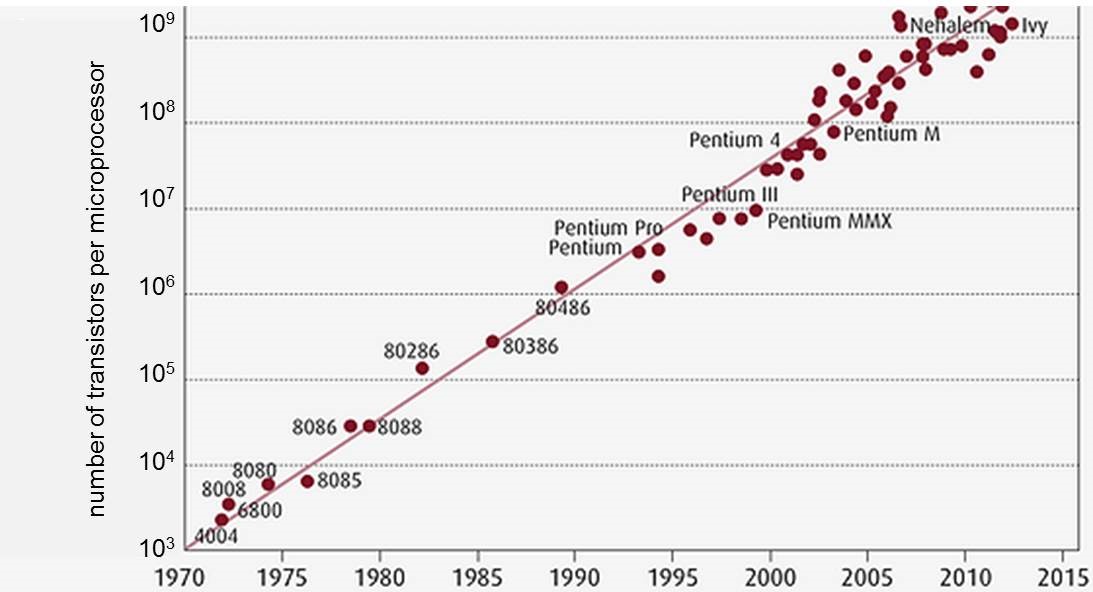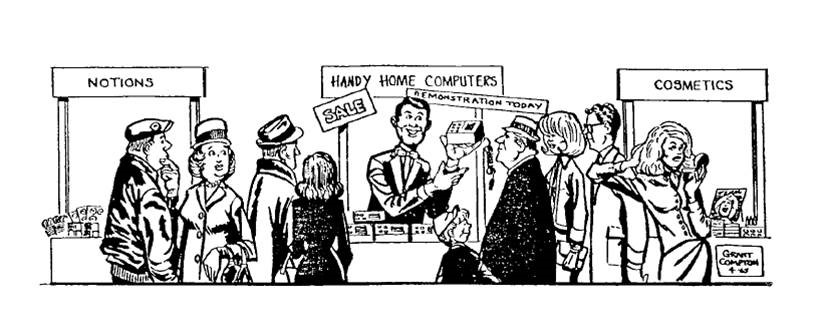The History Column: Moore’s Law
This quarter’s notable historical event is the publication, dated 19 April 1965, of an article by Gordon Moore entitled “Cramming More Components onto Integrated Circuits.” Moore was the co-founder of Fairchild Semiconductors, and subsequently CEO of Intel.
The key result in this publication was a plot of the number of transistors in a microprocessor (on a logarithmic scale) versus year. There are various versions of this plot, but the remarkable thing is that it gives a respectable straight line, with a slope such that the number of transistors (and hence the processing power) doubles something like every 1.5 years. This has held true over more than four decades, and has become known as Moore’s Law.

This has had profound implications on so many aspects of our everyday lives. This is why a computer that you buy today will be out of date within just a few years.
Of course, it cannot be expected that the trend will continue indefinitely. Eventually transistor structures will start to approach the atomic scale, and it will not be possible to fabricate devices that are any smaller. But such is the imperative for increasing computing power that new approaches will certainly be found.
It is sometimes claimed that there is greater processing of a modern-day cell phone than the computer carried by the Apollo 11 lunar module. The Apollo Guidance Computer was based on discrete logic with a clock speed of 2.048 MHz and 2048-bit RAM memory. This is a factor of more than three orders of magnitude less than an I-phone 5 – so the claim is certainly true. Of course, for more modern cell phones the difference will be even greater.
There are two other aspects that are unusual. Firstly, the publication includes a cartoon., which shows people standing in line to buy a personal computer. The physical size of these is very similar to a modern-day laptop.
The second remarkable aspect is the final paragraph, which reads:
Even in the microwave area, structures included in the definition of integrated electronics will become increasingly important. The ability to make and assemble components small compared with the wavelengths involved will allow the use of lumped parameter design, at least at the lower frequencies. It is difficult to predict at the present time just how extensive the invasion of the microwave area by integrated electronics will be. The successful realization of such items as phased-array antennas, for example, using a multiplicity of integrated microwave power sources, could completely revolutionize radar.
So not only did the publication put forward Moore’s Law, it also made some very sage predictions about the development of personal computers and of phased array radar. It was republished in IEEE Proceedings in January 1998.

Reference:
Moore, G.E., ‘Cramming more components onto integrated circuits’, Electronics, pp114–117, 19 April 1965; reprinted in IEEE Proceedings, Vol.86, No.1, pp82–85, January 1998.
Authored by Hugh Griffiths
University College London

